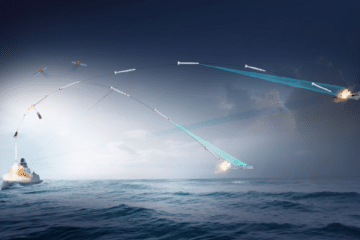The U.S. Navy has scheduled the last guided flight test of the Evolved SeaSparrow Missile (ESSM) Block 2 to further evaluate the weapon’s new active guidance seeker, Naval News has learned during the Surface Navy Association’s National Symposium currently held near Washington DC.
The seeker upgrade provides sailors with more flexibility, enabling them to deploy ESSM in active or semi-active guidance modes. Developed by the U.S. Navy and nine of the other 11-member nations of the NATO SEASPARROW Consortium, the ESSM missile is bringing transformational anti-ship missile defense capabilities to the U.S., NATO and other allies. The NATO SeaSparrow Project marked its 50th anniversary last year. It is the largest and longest running cooperative weapons program in NATO.
About ESSM
ESSM is a
medium-range, all-weather, semi-active radar-guided missile used in
surface-to-air and surface-to-surface roles. ESSM represents more than
four decades of technology and design improvements by a 43-year
international cooperative partnership composed of 12 nations, 10 of
which employ ESSM (and FMS to 3 countries: Japan, UAE and Thailand).
As a tail-controlled missile, ESSM uses enhancements to its guidance system to take advantage of improved seeker sensitivity, increased propulsion and greater weapon accuracy. These features enable ESSM to arrive at the intercept point with more endgame speed and agility to counter the threat.
ESSM’s capability bridges the gap between close-in air defense and local area defense systems. Its kinematics result in reduced time to target. It is a Multi-mission weapon system is effective against high-speed or low-velocity threats.
According to open sources, the RIM-162 Evolved SeaSparrow Missile (ESSM) has a range of about 27 nautical miles (50 Km) and a top speed of Mach 4+.
Unlike Block 1, Block 2’s active radar homing seeker will support terminal engagement without the launch ship’s target illumination radars. The improved ESSM Block 2 will be fielded by the US Navy from 2020.







One Comment
Pingback : Leonardo to Supply New 127mm Main Guns for Netherlands Navy's LCF Frigates - Naval News